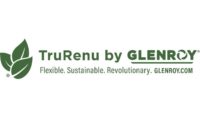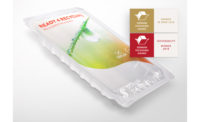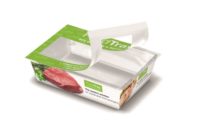From pants to poultry, the COVID-19 pandemic has driven a surge in consumer demand for e-commerce goods delivered directly to their homes. According to figures from the U.S. Department of Commerce, e-commerce is experiencing a booming 32.4% surge from 2020—the highest annual e-commerce growth in at least two decades.1 It is expected e-commerce is now on track to surpass 20% of total retail by 2024.2
At the same time, the increasing number of shipments delivered directly to doorsteps has only increased consumer focus on packaging sustainability. Food companies transitioning to more e-commerce offerings – while striving to meet aggressive sustainability targets – should consider the full life-cycle benefits flexible packaging can deliver as part of their packaging mix.
The Flexible Packaging Association (FPA) recently conducted several real-world e-commerce case studies showing that flexible packaging, when compared to other packaging formats, has significantly better environmental attributes for greenhouse gas emissions, fossil fuel usage, and water usage. The Streamlined Life Cycle Assessment (LCA) case studies use EcoImpact-COMPASS® LCA software to quantify the environmental and economic shipping impacts of flexible and non-flexible e-commerce packaging. And while the case studies focused on items like cereal and peanut butter, the same lifecycle benefits can be applied to meat and poultry as well.
Fossil Fuel Usage
Because flexible packaging requires fewer resources to manufacture, packages with flexible structures generally use significantly less fossil fuels than other packaging formats. For cereal, for example, our e-commerce case study showed using a stand-up pouch used considerably less fossil fuels than traditional bag-in-box options. The bag-in-box carton as shipped (1,031.6 g) uses nearly 4X the amount of packaging as the stand-up pouch system (277.6g), largely due to the two separate corrugated cases. Even when the overbox is eliminated, the bag-in-box option (536.5 g) still uses more than twice the fossil fuels as the stand-up pouch option.
This same principle can apply to meat and poultry e-commerce packaging, which generally uses multiple shipping containers.
Greenhouse Gas Emissions
Overall greenhouse gas (GHG) emissions are lower with the lighter weights of flexible packaging structures. In the same cereal e-commerce case study, the bag-in-box options resulted in considerably higher overall GHG emissions than the stand-up pouch scenario. In fact, the bag-in-box option with the overbox results in +290% more GHG emissions, driven largely by the overall amount of packaging. Again, this is a similar application to meat and poultry e-commerce applications
Water usage
Flexible packaging also requires significantly less water to manufacture. In that same case study, in fact, the bag-in-box cereal shipped with the overbox uses +708% more water compared to the stand-up pouch option.
Reducing Food Waste
According to the FPA Value of Flexible Packaging in Extending Shelf Life and Reducing Food Waste Report, with flexible packaging technology, a whole chicken remained fresh for shoppers to buy for 20 days. A pound of beef maintained its quality for 23 days versus 14 days when traditional packaging was used.
To learn more about the Flexible Packaging Association and review full case studies, including the Flexible Packaging Offers Significant Sustainability Benefits for e-Commerce Applications report, please visit www.flexpack.org.
1 Fareeha Ali; Jessica Young, “US ecommerce grows 32.4% in 2020,” Digital Commerce 360, 2021
2 Insider Intelligence Editors, “US ecommerce forecast revised upward, 18% growth expected in 2021,” E-marketer.com, 2021






Report Abusive Comment